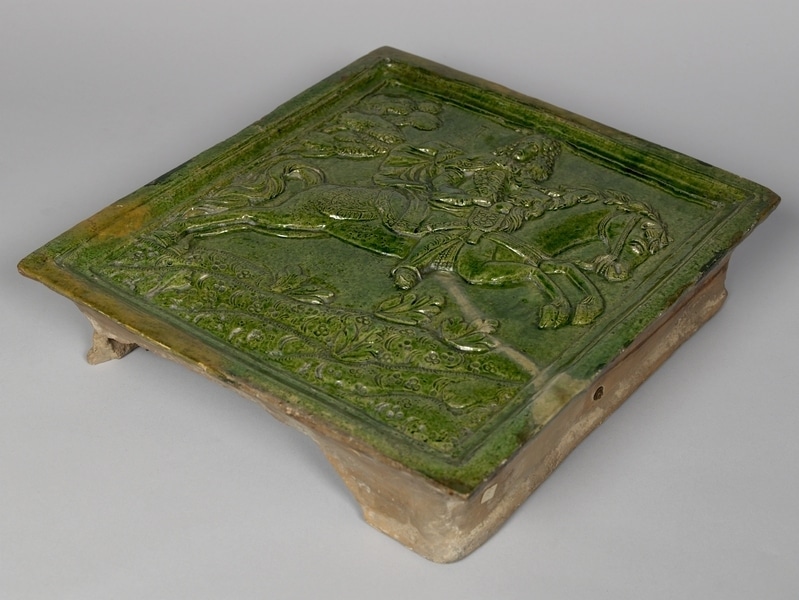Stove Tile Item Number: Cg117 from the MOA: University of British Columbia



Description
Rectangular earthenware green tile with relief scene of man on a galloping horse, right side with man facing front. He wears a curly wig, cloak and skirt, and carries a scroll in his right hand, with an "I" inscribed above, and trees and foliage beneath. Unglazed sides, back.
Cultural Context
functional; decorative
Specific Techniques
lead-glazed
Iconographic Meaning
Image of a horseman, possibly William of Orange (William III of England) (1650–1702), dressed in noble clothing, wearing a long curling wig from the seventeenth-century Stuart era, and holding a baton in one hand. The letter "I" inscribed behind his head probably means “imperator,” which indicates the rider is royalty. This image bears a strong resemblance to portraits by Jan Wyck (1652–1700), who painted William at the Battle of the Boyne (1690), where he conquered James II, his rival for the throne of England.
Item History
- Made in Austria between 1600 and 1650
- Owned by Walter C. Koerner before December 2, 1988
- Received from Walter C. Koerner (Donor) on December 2, 1988
What
Who
- Culture
- German
- Previous Owner
- Walter C. Koerner
- Received from
- Walter C. Koerner (Donor)
Where
- Holding Institution
- MOA: University of British Columbia
- Made in
- Austria
When
- Creation Date
- between 1600 and 1650
- Ownership Date
- before December 2, 1988
- Acquisition Date
- on December 2, 1988
Other
- Item Classes
- ceramics; earthenware; lead-glaze
- Condition
- good
- Accession Number
- 1417/0154